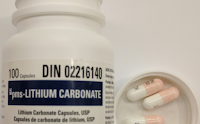MITOCHONDRIA ARE THE ENERGY-PRODUCING
powerhouses of our brain cells. Groundbreaking research discovered that boosting mitochondria defenses enables cells to not only protect themselves, but to also reduce the formation of Alzheimer’s plaque. Learn why this breakthrough may succeed where so many other drugs have failed.
Scientists at EPFL found that rendering mitochondria resistant to damage can halt diseases caused by amyloid toxicity, such as Alzheimer’s disease. The study is published in Nature.
Alzheimer’s Plaque is Made out of Beta-Amyloid
Alzheimer’s disease is the most common form of dementia and neurodegeneration worldwide. A major hallmark of the disease is the accumulation of toxic plaques in the brain, formed by the abnormal aggregation of a protein called beta-amyloid inside neurons.
Still without cure, Alzheimer’s poses a significant burden on public health systems. Most treatments focus on reducing the formation of amyloid plaques, but these approaches have been inconclusive. As a result, scientists are now searching for alternative treatment strategies, one of which is to consider Alzheimer’s as a metabolic disease.
Boosting Defenses
Taking this line of thought, Johan Auwerx’s lab at EPFL looked at mitochondria, which are the energy-producing powerhouses of cells, and thus central in metabolism. Using worms and mice as models, they discovered that boosting mitochondria defenses against a particular form of protein stress, enables them to not only protect themselves, but to also reduce the formation of amyloid plaques.
During normal aging and age-associated diseases such as Alzheimer’s, cells face increasing damage and struggle to protect and replace dysfunctional mitochondria. Since mitochondria provide energy to brain cells, leaving them unprotected in Alzheimer’s disease favors brain damage, giving rise to symptoms like memory loss over the years.
The scientists identified two mechanisms that control the quality of mitochondria: First, the “mitochondrial unfolded protein response” (UPRmt), which protects mitochondria from stress stimuli. Second, mitophagy, a process that recycles defective mitochondria. Both these mechanisms are the key to delaying or preventing excessive mitochondrial damage during disease.
Defense & Recycle Pathways
While we have known for a while that mitochondria are dysfunctional in the brains of Alzheimer’s patients, this is the first evidence that they actually try to fight the disease by boosting quality control pathways. “These defense and recycle pathways of the mitochondria are essential in organisms, from the worm C. elegans all the way to humans,” says Vincenzo Sorrentino, first author of the paper. “So we decided to pharmacologically activate them.”
The team started by testing well-established compounds, such as the antibiotic doxycycline and the vitamin nicotinamide riboside (NR), which can turn on the UPRmt and mitophagy defense systems in a worm model (C. elegans) of Alzheimer’s disease. The health, performance and lifespan of worms exposed to the drugs increased remarkably compared with untreated worms. Plaque formation was also significantly reduced in the treated animals.

Whole-brain hemisphere sections of Alzheimer’s mice, the model APP/PSEN1, before and after treatment with the NAD+ booster Nicotinamide riboside (NR). The beta-amyloid plaque content in the brain of the APP/PSEN1 mice (left), clearly visible by Thioflavin S staining in green color and associated to brain damage during the disease, is reduced after 10 weeks treatment with NR (right). Credit: Vincenzo Sorrentino, Mario Romani, Francesca Potenza/EPFL.
And most significantly, the scientists observed similar improvements when they turned on the same mitochondrial defense pathways in cultured human neuronal cells, using the same drugs.
Significant Improvement
The encouraging results led the researchers to test NR in a mouse model of Alzheimer’s disease. Just like C. elegans, the mice saw a significant improvement of mitochondrial function and a reduction in the number of amyloid plaques. But most importantly, the scientists observed a striking normalization of the cognitive function in the mice. This has tremendous implications from a clinical perspective.
According to Johan Auwerx, tackling Alzheimer’s through mitochondria could make all the difference. “So far, Alzheimer’s disease has been considered to be mostly the consequence of the accumulation of amyloid plaques in the brain,” he says. “We have shown that restoring mitochondrial health reduces plaque formation – but, above all, it also improves brain function, which is the ultimate objective of all Alzheimer’s researchers and patients.”
The strategy provides a novel therapeutic approach to slow down the progression of neurodegeneration in Alzheimer’s disease, and possibly even in other disorders such as Parkinson’s disease, which is also characterized by profound mitochondrial and metabolic defects.
The approach remains to be tested in human patients. “By targeting mitochondria, NR and other molecules that stimulate their ‘defense and recycle’ systems could perhaps succeed where so many drugs, most of which aim to decrease amyloid plaque formation, have failed,” says Vincenzo Sorrentino.
Contributors
- Michigan State University
- EPFL Proteomics Core Facility
Funding
- ‘EPFL Fellows’ program (co-funded by the Marie Skłodowska-Curie, Horizon 2020 Grant)
- Associazione Italiana per la Ricerca sul Cancro (AIRC)
- National Institutes of Health (NIH)
- Systems X
- Velux Stiftung
- The Jebsen Foundation
- Swiss National Science Foundation
Reference
Vincenzo Sorrentino, Mario Romani, Laurent Mouchiroud, John S. Beck, Hongbo Zhang, Davide D’ Amico, Norman Moullan, Francesca Potenza, Adrien W. Schmid, Solène Rietsch, Scott E. Counts, Johan Auwerx.Enhancing mitochondrial proteostasis reduces amyloid-β proteotoxicity. Nature 06 December 2017. DOI: 10.1038/nature25143.











